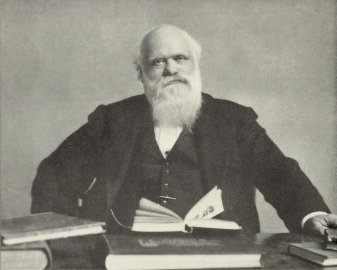Roots and Wings
The man depicted here was born 200 years ago. What’s that? You don’t know him? If not, don’t worry. It’s not terribly surprising. And it’s okay. History can tend to obscure such people after a while.
His name was James Goodwin Batterson. He was born in 1823 in either Bloomfield or Windsor, Connecticut. The accounts vary. After working for a time at a print shop in Ithaca, New York, Batterson returned to Connecticut, at age 23, to found New England Granite Works. Though the business began as a cemetery monument business in Hartford. But Batterson soon established himself as a stone dealer and a building contractor. He introduced mechanical granite polishing when he created a lathe that produced round, polished stone columns.
Batterson was an artist, a historian, a scientist, and a lover of languages, becoming proficient in Greek and Latin. He spent several years in Egypt, becoming honorary secretary of the Egyptian Exploration Fund. He spent time in Europe, studying art and writing poetry. He was among the founders of the Hartford Arts Union and a trustee of the Wadsworth Atheneum for 40 years. In addition, he served as a member of the committee that created Hartford’s Bushnell Park.
During the Civil War, Batterson was chairman of the Connecticut State War Committee, serving as a construction consultant for the Union. As a result, President Lincoln appointed him building contractor for the Library of Congress building in Washington D.C. He also constructed the Masonic Temple in New York City, the Connecticut State Capitol in Hartford, the Connecticut Mutual Life Insurance Building in Hartford, the Mutual Life Insurance Building in New York, the Equitable Life Insurance Building in New York, and William K. Vanderbilt home, Marble House, in Newport, Rhode Island.
.
So, What?
Why should we know, let alone care, about James G. Batterson? While traveling in England, Batterson became impressed with the record and the success of the Railway Passenger Assurance Company. As a result, he determined to found a similar business in the United States. The Travelers Insurance company received its charter from the State of Connecticut on June 17, 1863. And Batterson is credited for introducing casualty insurance to the United States. As legend has it, on March 1, 1864, a local banker, James Bolter, jokingly asked Batterson how much it would cost to insure him up to $5,000 against accidental death for Bolter’s journey from the post office to his home. Batterson replied, “Two cents.” Bolter paid what amounted to The Travelers Insurance Company’s first insurance premium. Those coins have been kept by the company ever since. Batterson headed The Travelers until his death in 1901 at the age of 78. He he was posthumously inducted into the Insurance Hall of Fame in 1965.
Given achievements, it’s definitely arguable that James G. Batterson planted the roots of what’s become the property/casualty insurance industry in the United States. Consequently, he’s given the rest of us who fly in and around the industry the wings to do so.
He’s also given us an example of a very full life, very well-lived.





Leave a Reply
Want to join the discussion?Feel free to contribute!